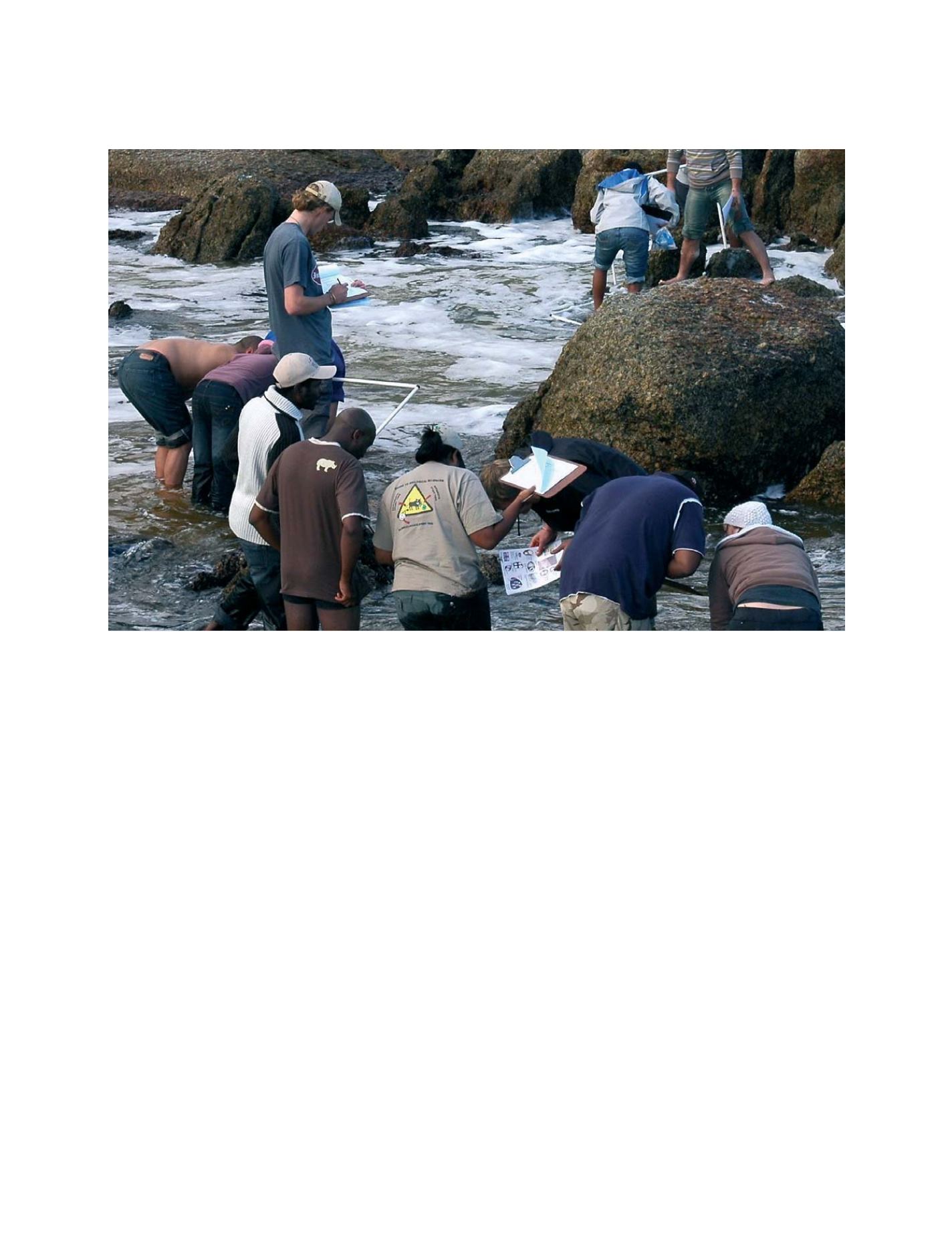

(irrigation monitoring, groundwater resources and aquaculture);
ocean and coastal resources (aquaculture, shellfish and fish), and
socio-economic conditions (population distribution, production
intensity, food provision and cultural heritage).
With GEOSS in place, policymakers and farmers alike will be able
to use Earth observations for routine and operational agricultural
monitoring, yield prediction and risk management, thus ensuring
sustainable agriculture and food security.
Biodiversity
Understanding, monitoring and conserving biodiversity is critical to
ensuring the sustainable use of the world’s biological resources. Key
goals include protecting threatened and endangered species, combat-
ing invasive alien species and animal-borne diseases, and maintaining
species diversity and genetic resources. Each of these specific objec-
tives could be more effectively pursued if decision-making could be
based on the ready availability of more accurate scientific data and
rapid analyses of these relevant data.
The need to monitor the changes to animal and plant species and
communities becomes ever more critical as biodiversity is put under
increasing pressure from human activities, such as natural habitat
conversion and climate change. New technologies for remote sensing
and in situ observation, coupled with pattern recognition and model-
ling techniques, have opened up promising new means of monitoring
species populations and understanding changes in biodiversity.
Implementing GEOSS will unify many disparate biodiversity-
observing systems and create a platform for integrating biodiversity
data with other types of information. Taxonomic and
biological-information gaps will be filled, and the pace
of information collection and dissemination increased.
An important component of GEOSS will be the Global
Biodiversity Observation Network. This network of
interoperable biodiversity observation systems will also
establish links with other ecological data sets.
Meanwhile, GEO members and participating organi-
zations are working with interested partners to develop
a biodiversity observation strategy based on geographic
and thematic priorities. They are identifying ecosystems
that are: unique or highly diverse; that support migra-
tory, endemic or globally threatened species; whose
biodiversity is of socio-economic importance; and which
can support the 2010 Convention on Biological
Diversity targets.
This brief survey of the societal benefits promised
by GEOSS has attempted to set the stage for the arti-
cles that follow. While each of the activities and
projects described in this chapter are unique, they all
share one theme in common: they have been launched
to meet the urgent and expanding needs of the human
race in the early 21st century. These needs alone justify
the large sums of money and energy that are being
invested today on Earth observations and on the
construction of the Global Earth Observation System
of Systems.
[
] 157
S
OCIETAL
B
ENEFIT
A
REAS
Reducing the loss of life and property from natural and human-induced disasters requires access to a wide range of environmental information
















